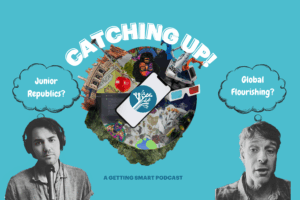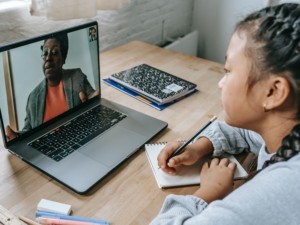Three Tips for Stoking the Fires of Overachievers

We all have those students whose 100’s on every essay, quiz and test seem to run together, creating a bright spot in piles of grading.
Unfortunately, this can create the illusion that everything must come easily for those students. And, for some, it does.
But there is also another group who puts in the time and works hard, listens carefully, can read-between-the-lines when the teacher drops hints about the content of the test and are just good at “doing school.”
In an educational environment where the Growth Mindset is revered, I’m having a much more difficult time feeling confident that these shining bright lights will stay inspired. This year particularly, I have a group of really hard working, dedicated students who will rise to the occasion every single time I raise the bar. It’s exciting, and it has given me an opportunity to rethink my practice.
So here are three tips to help stoke the fires of those students who are already burning brightly.
1. PBL with a Side of Mentoring
As one of those kids at the table who was always asked to “help” my elbow partner, I’ve long since stopped asking kids to do the teaching for me. If I don’t deliver the lesson in a way that meets all children, then I need to wrap around my instruction by pulling aside those who need another approach. However, I’m going to be trying something a little different with the Utopia projects my students are working on right now.
These are extensive projects that will take weeks of class time, tons of preparation, a great deal of technological savvy and the nerve to present in front of the class, as well as parents and administrators. For many of the high achievers, the project will become a bit of an obsession, and I’ve found over the years that they can actually burn out from attacking the work too intensely. I’ve often felt like saying, “Slow down! You’re doing great. You’re doing better than great! Enjoy this a little bit more.”
The difference is this year, I’m going to actually say that.
And, I’m going to ask them to mentor students who need a sounding board or an expert researcher to help out a little. I’m going to create a mini-mentoring squad of students who should take a breath and who will benefit from the opportunity to help other students–something along the lines of this.
The idea came to me when I recently created a role of “moderator” for a fishbowl activity we were doing. I wanted to free myself up from reading the questions so that I could focus on the rubrics, so I decided that a student could easily do the job. I was pleased (and shocked) that students were fighting over the opportunity to moderate, although I’ve been promoting speaking and listening skills for many years.
Since this will be my first foray into this peer-to-peer mentoring, I’m going to do what I always do when I’m not sure what to do: watch and listen to what students themselves do with the opportunity. I know that it will remain voluntary, never single out students and will stay low key and stressless for all sides.
2. Connect the Academic with the Social Emotional
I did a little research and this idea of peer-to-peer mentoring boasts benefits, even in business arenas. One of the benefits mentioned is the positive experience for both the mentored and mentee, claiming growth for both sides. I’m convinced that students who are “advanced” will benefit as much as those who need a little extra help. Why? The soft skills necessary for this type of social transaction are complex, and any time I can get my students communicating around their learning everyone is better for it.
Additionally, helping others is a surefire way of getting out of our own way. Notice I switched pronouns there? I’m one of “those” who wants the 100’s, works too frenetically and sometimes doesn’t stop to smell the roses. Or frankly, know that there are roses at all. The American Psychological Association’s article “Helping Others, Helping Ourselves” suggests that the benefits are real, even if our altruism isn’t. The most successful connections are going to happen when the students empathize with each other–interestingly, over my class!
3. Celebrate Success
Another idea came to me recently about the plight of those burning bright. It’s like these students are a fire, and teachers and parents alike are excited that they are burning up with success. But, without stoking the fire occasionally, it is going to go out–to “burn out” from the lack of attention.
We all know the studies about motivation, so I’ve stopped the bribery I used to ascribe to. However, random surprises are okay even by Daniel Pink’s standard, so when I finished grading an intensive test, those students who received a 100 were given an invitation with their grade. I’m having a hot chocolate bar party the day before winter break for those students. In all, there were 33 students who I’m choosing to recognize in this way.
When I announced this random celebration, I was surprised by the reaction. The students who got the 100’s were really excited, even commenting that no one pays attention to their grades when they are good. The rest of the class? I was impressed by how many students congratulated each other. The #1 takeaway from this random party is that my students want recognition, and even though I know that they must be internally motivated, I also have to remember that a well-timed compliment and celebration can stoke the fire of those who might otherwise burn out.
In the end, it is important to realize that motivation is a complicated entity, and that successful students already have a complex relationship with their successes and what it takes to be at the top. I’m not recommending a formalized program in any way, but rather a keen interest in yet another segment of the classroom population.
For more, see:
- Preparing Students For Future Success with PBL and SEL
- Project Management Solutions for the 21st-Century Student
- 3 Small Steps Toward Creating a Flexible Classroom
Stay in-the-know with all things EdTech and innovations in learning by signing up to receive the weekly Smart Update.








0 Comments
Leave a Comment
Your email address will not be published. All fields are required.